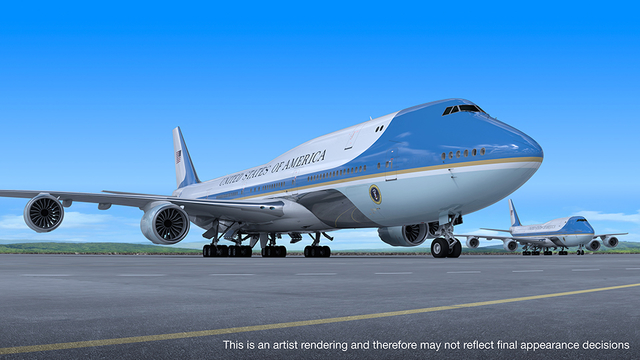The US Air Force’s $3.9 billion contract with Boeing to modify two 747-8 commercial airliners into VC-25B presidential aircraft, commonly known as Air Force One, offered a rare glimpse into the aircraft configurations.
The aircraft’s modifications will include integration of a military GPS into its flight management system and identification friend-or-foe capabilities, according to a Justification and Approval for Other Than Full and Open Competition document filed by the USAF. Boeing was selected as the programme’s prime contractor without competition as no other company has the knowledge of the 747-8 needed to heavily modify without significant increases in price, according to the justification.
The USAF plans to replace its current fleet of presidential aircraft, two 747-200-based VC-25A aircraft delivered in 1991, with two 747-8s originally built for Russian carrier Transaero, which filed for bankruptcy in 2015 before it could take delivery. The new presidential aircraft are scheduled to begin flying in December 2024.

Boeing
The contract announced on 17 July made formal a handshake agreement President Donald Trump reached with Boeing chief executive Dennis Muilenburg in February. The USAF says it will save more than $1.4 billion by using already-built 747-8s.
Other modifications to the 747-8s include replacing the existing auxiliary power unit, usually a Pratt & Whitney PW901A/C on the commercial airliner, with two APUs from unnamed sources. A second APU is a rarity among modern airliners and, according to the book Air Force One by Robert Dorr, was installed on previous presidential aircraft to ensure they were “self-sufficient on the ground”.
Boeing will also install two additional doors on the left side of the aircraft, one forward of the wing and one behind the wing, according to the acquisition document. The doors will come with retractable airstairs to allow the aircraft to emplane passengers and crew without needing to rely on ground-based staircases.
Additional modifications will be done to the aircraft environmental controls, electrical power, water management, fuel system and engines, says the justification.
Work on the aircraft will be performed at Boeing’s facilities in San Antonio, Texas.
Source: FlightGlobal.com






















